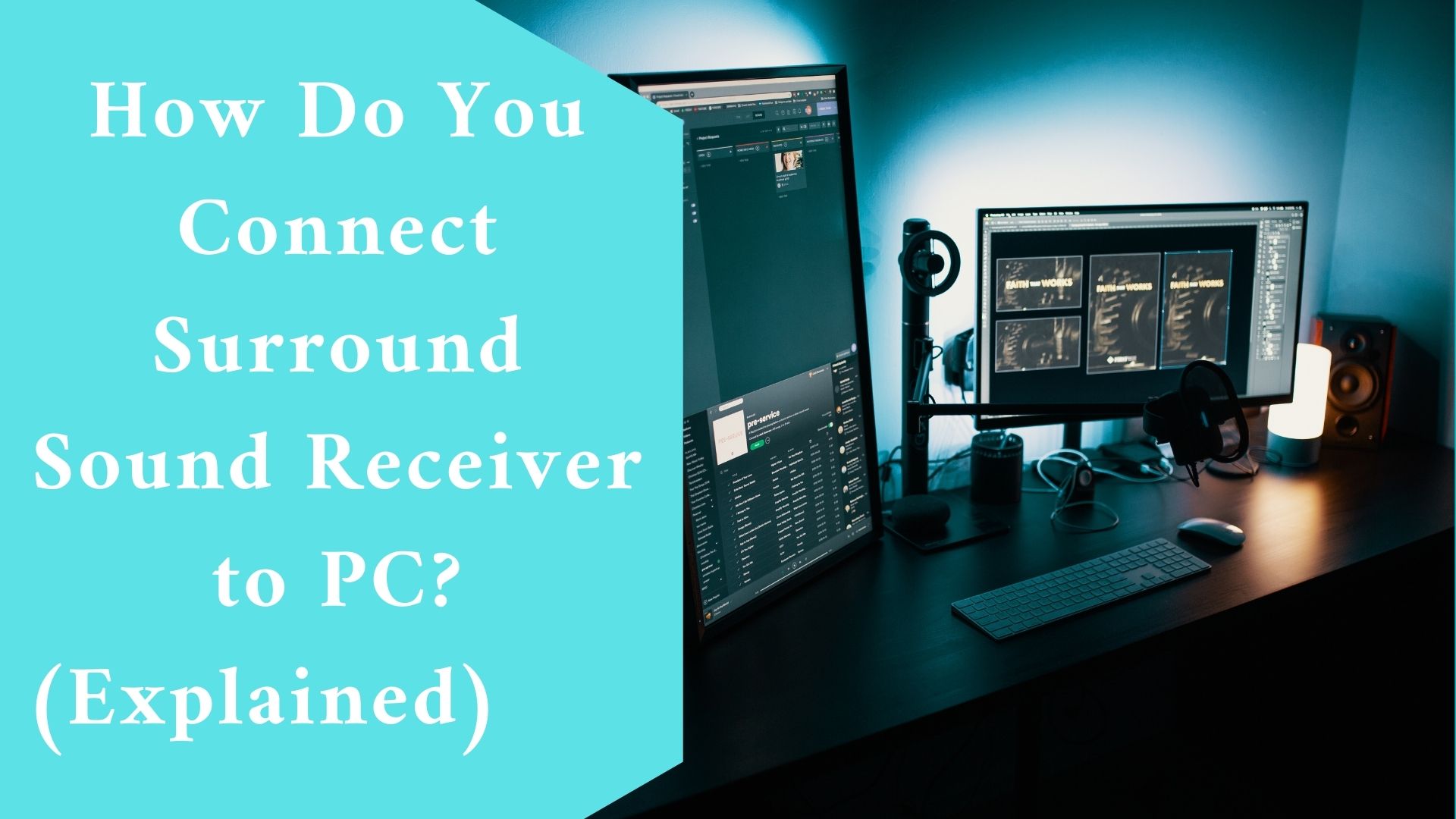HDMI to GPU or motherboard? How do you connect a surround sound receiver to a PC? If you prefer watching your PC on TV, you may have had trouble getting your desktop to correctly connect to your AV receiver.
Sure, some receivers are plug-and-play, but for some of us, getting a PC to operate with surround sound can be difficult.
How Do You Connect Surround Sound Receiver to PC?
You should be able to connect your PC to your AV receiver and obtain full visual and surround sound audio without any problems if you do get it right.
However, depending on the model, you may encounter difficulties connecting to a computer.
If you’re using an AV receiver of a good mid-range model like that of Denon AVR-S730H, which is. Except for PC, it works well with almost every gadget.
When you connect the PC directly to the receiver, the video may flickers or drops out completely. So the best thing is to keep your PC connected to the TV, but ARC would only produce stereo from the computer.
Many PC owners may find themselves in this situation because AV receivers aren’t often designed with PCs in mind.
If your computer’s video isn’t working properly when connected to your AV receiver, there’s a simple solution that involves little setup: a phantom monitor.
The goal is to provide audio to your AV receiver while also sending video to your TV.
That is, you can obtain a clear image and surround sound without one interfering with the other.
The sole prerequisite is that your video card has at least two HDMI outputs, two DisplayPort outputs, or a combination of the two.
One disadvantage of using DisplayPort is that you’ll almost certainly need a DisplayPort-to-HDMI adaptor because the majority of AV receivers and TVs only have HDMI inputs.
Once you have two HDMI cables coming out of your computer, connect one to an HDMI input and the other to an AV receiver input.
the video here ????????????????
Tune your TV to the input to which your PC is attached, and the same for your receiver. If you get stuck, you can use the horrible picture above as a visual tutorial.
After connecting your PC to your TV and AV receiver, perform the following:
- Right-click the desktop and select “Display Settings.”
- Scroll down to the “Multiple Displays” heading.
- Select “Duplicate these displays” from the option under the heading.
- If the above dropdown doesn’t appear, click “Detect” and the option should appear.
- After that, you should be able to configure surround sound.
To enable surround sound on Windows 10, follow these steps:
- Select “Open Sound Settings” from the context menu when you right-click on the sound icon in the system tray.
- Click on “Sound Control Panel” under “Related Settings.”
- Make sure the output to your AV receiver is set as the default device in the Sound Control Panel.
- Right-click on your AV receiver’s audio output and select “Configure speakers.”
Surround sound options should be available under the configure speakers menu. Choose the one that best fits your setup and press “next” to run the configuration test.
Surround sound will then be available from any source that supports it. This applies to film, music, and games.
Final thought
One thing to keep in mind is that if you switch to another input on your AV receiver and then back, your PC may need to do another HDMI handshake for that output to resurface and work.
Go to Display Options and select “Detect” under Multiple Monitors. This should bring it right back up.

